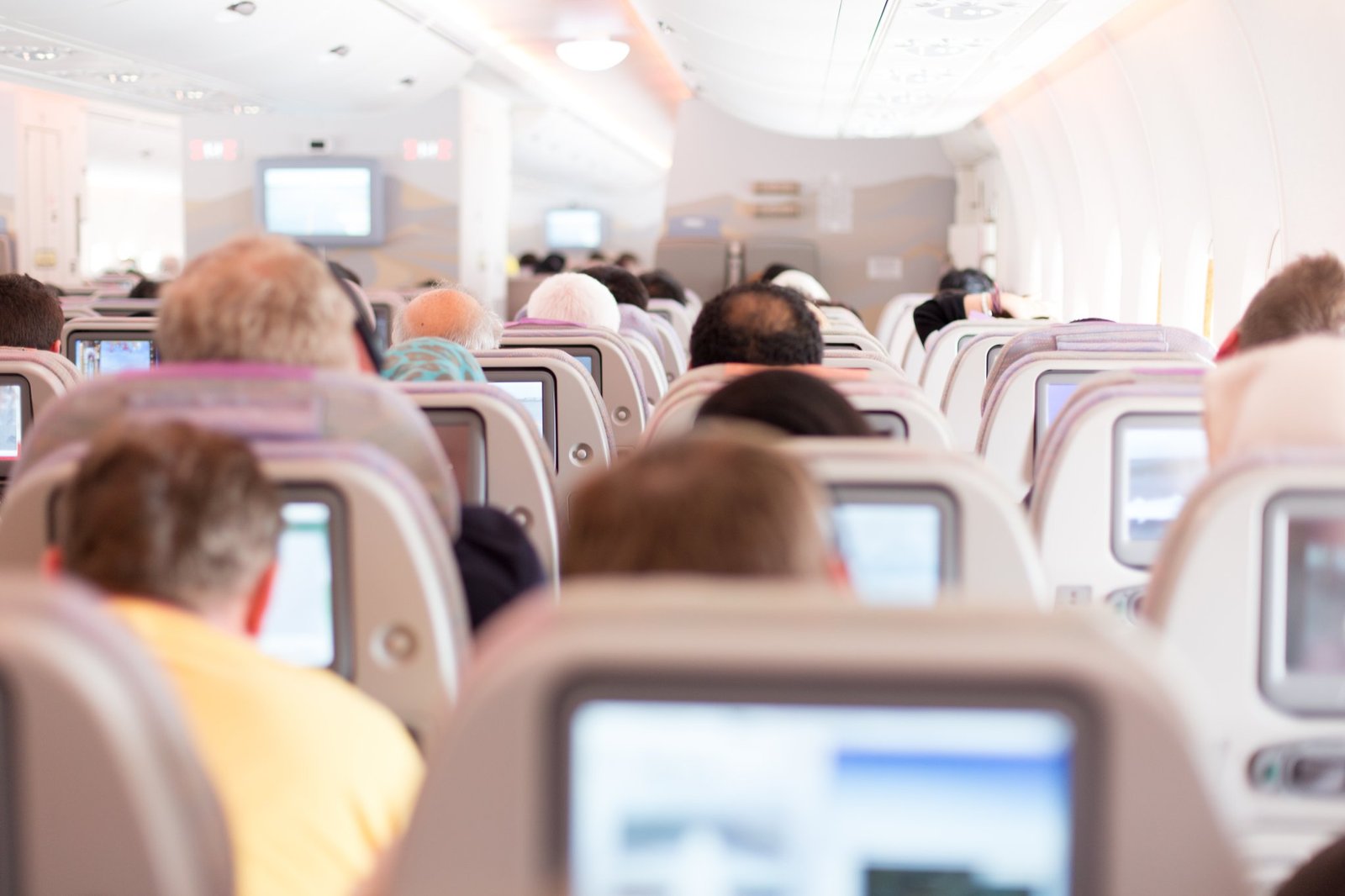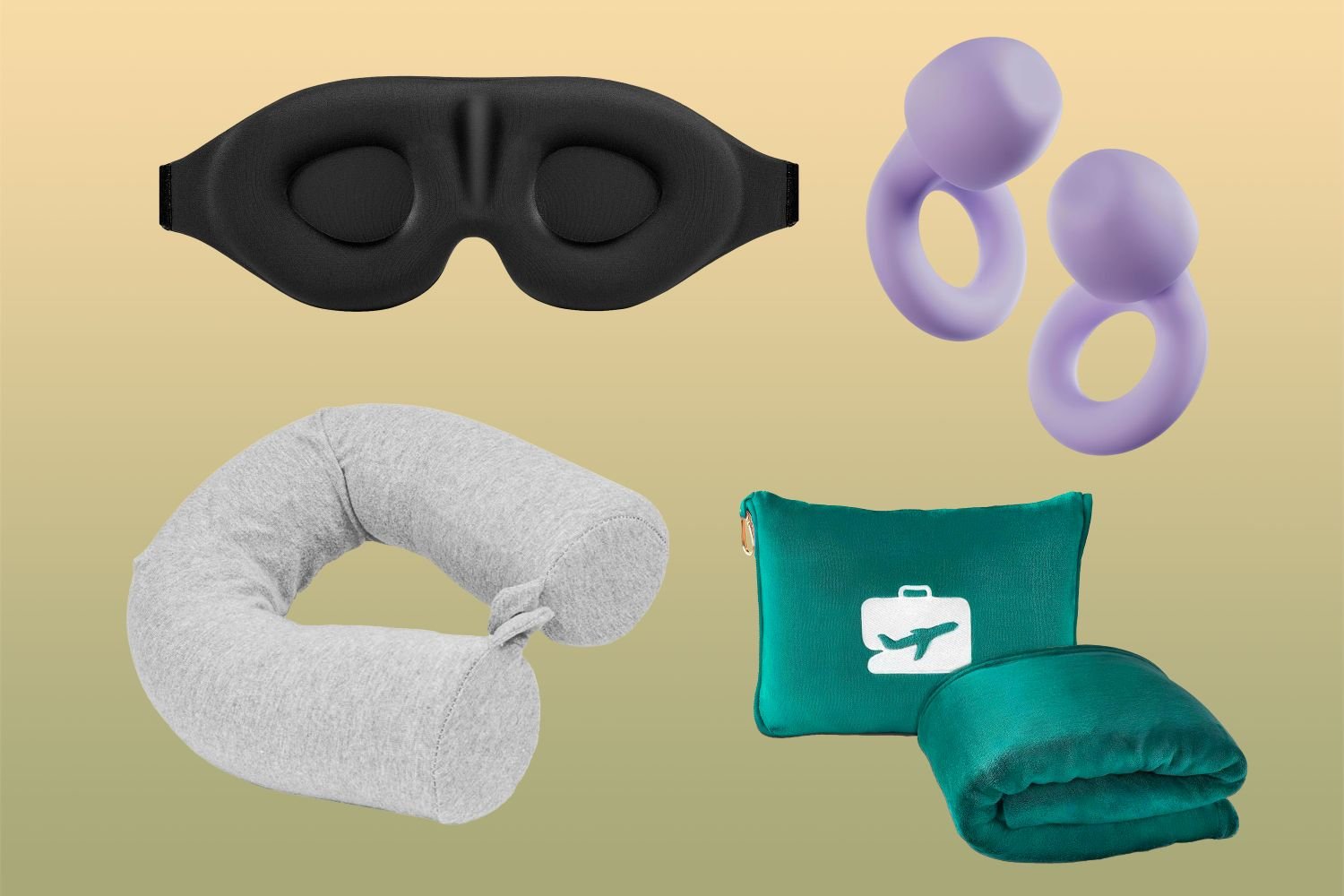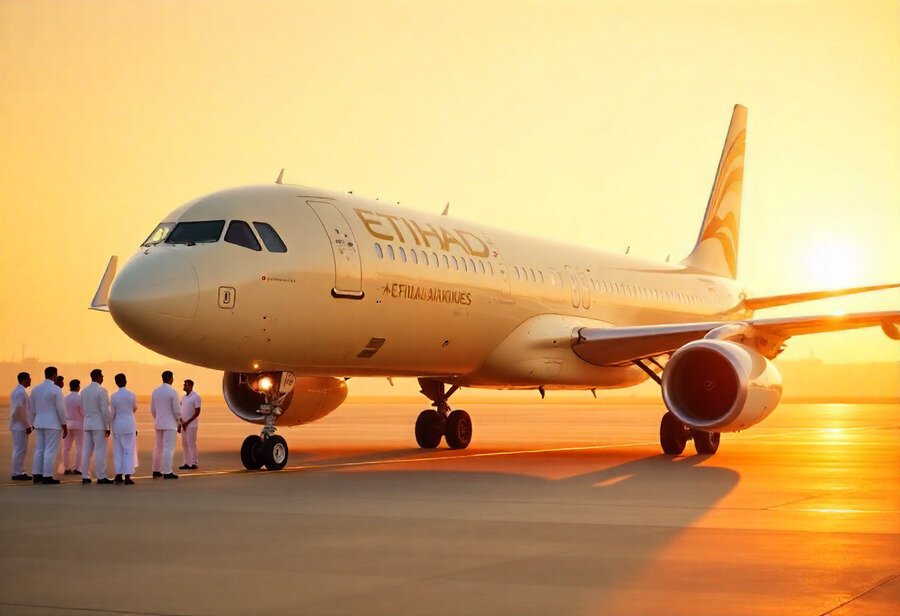Flight Buzz
Why do we put seatbacks up for landing? An aviation expert explains.

If you’re a frequent-flier, you know the drill: you’re desperately trying to doze off with your head lolling on a neck pillow, when a flight attendant tells you it’s time to stow your tray tables and put your seats back in the upright position. But why? you wonder. How much difference could it possibly make?
These days, the seats on Delta and many other carriers only go back a measly two inches, down from four a few years ago. Given that the average width of an Economy Class seat has dwindled to just 17 inches, every extra inch counts for passengers. So it’s understandable to feel a bit indignant at having to move right as you were convincing yourself you were almost comfy.
It turns out though that there’s a good reason for why we sacrifice those precious few inches for takeoff and landing—and it has a lot to do with the way we measure airplane safety.
“In an emergency evacuation, a real one, where you’ve got the cabin filling up with smoke, you can’t have any factors that slow things down,” says John J. Nance, an aviation analyst who specializes in safety systems. “It just takes one person and one obstacle, which can include the seat back, and then you start bunching people up as you’re trying to get 150, 180 people out of an aluminum tube.”
[ Related: How do airplane toilets work? ]
Only 90 seconds
Since the 1960s, the U.S. Federal Aviation Administration (FAA) has ruled that a plane needs to be able to be evacuated in 90 seconds in order to be considered safe. That’s a tall order, particularly given how much less room present-day passengers have to maneuver. Despite some efforts to revise it, 90 seconds remains the gold standard with both the U.S. government and airplane manufacturers world-wide.
Part of why that 90-second rule feels unrealistic to some is that it’s tested under carefully controlled conditions. “It’s an artificial standard,” Nance says. “They used to joke and call it the ‘Boeing Athletic Club,’ since they’d test this standard with very fit people. We don’t really expect that it’s going to be 90 seconds in a real evacuation, but that’s what we can measure against.”
Of course, in a real airplane emergency, not everyone onboard is going to be an aspiring Olympic athlete. Most commercial flights carry small children, elderly passengers, and passengers with mobility issues. While there are plenty of variables the airline can’t control, it does its best to keep as many factors as close to test conditions as possible. “That includes having the seats in the upright position, as well as nothing that can tangle your feet up,” Nance says. “That’s why the flight attendants are thought to be so aggressive about it.”
How the seat mechanism works
Virtually every commercial airplane in the world uses the same mechanism to make sure that when you put the seat upright, it stays upright. “It’s not a mechanical lock, but rather a little hydraulic system,” Nance explains.
Commercial planes have evolved quite a bit since the early 20th century, when the seats were quite literally just wicker chairs crammed onboard. Yet even as other parts of the aircraft have changed, the hydraulic locking system that keeps your seat in place on virtually every plane is the same one they’ve been using since 1947.
The Hydrolok system was invented by P.L. Porter Co. and continues to be the industry-wide go-to, largely because it lasts for ages. According to current manufacturer Crane Aerospace & Electronics, a Hydrolok seatlock is good for about 250,000 cycles. Since most commercial aircraft are retired after around 30 years, those seatlocks rarely need to be replaced.
Protection for both airlines and passengers
Part of the reason airline safety testing standards haven’t changed in over half a century is there’s a certain “if it ain’t broke, don’t fix it” attitude. Sure, you could do side-by-side tests to see if leaving seats reclined makes a significant difference, but that risks rocking the boat. “It would clash with the spirit and intent of the way those things have been tested for a long time,” Nance says. “You’re getting back to the most dangerous phrase in aviation and there’s a sense that this is ‘the way we’ve always done it.’”
To be clear, the odds of passengers needing to test those safety features for themselves are low. According to an analysis by the Hearst Television Data Team, there have been a total of 87 fatal crashes involving commercial planes with 10 or more passengers in the U.S. since 1970. Still, making any substantial change to testing standards would expose aircraft manufacturers to serious legal risk in the event of an accident.
[ Related: Why do our ears pop on a plane? ]
“Every little thing you’re dealing with is a massive potential liability,” says Nance. “If anything happens, the plaintiffs’ attorneys are going to be screaming at you. So it’s no small matter either making a change or even proposing a change. And that’s why the manufacturers try to protect their airlines as best they can by standardization.”
That means that no matter what country an airplane is manufactured in, it adheres to the same set of safety tests. “The situation is that there are so many standards set by the manufacturer, Boeing for all of its airplanes, Airbus for all of its airplanes, Embraer, et cetera, that they become a worldwide standard,” Nance says. Changing any single factor would involve not only challenging the FAA, but governmental regulations in countries around the globe.
Let’s face it—no company wants to be the one to skirt tried-and-true safety standards when the stakes are this high. The same goes for individual passengers. Pushing your seat back up for landing might seem like a nuisance, but you don’t want to be the one to slow things down if anything goes wrong.
This story is part of Popular Science’s Ask Us Anything series, where we answer your most outlandish, mind-burning questions, from the ordinary to the off-the-wall. Have something you’ve always wanted to know? Ask us.
Flight Buzz
9 Items You Need if You Can’t Fall Asleep on Planes

Unless you’re one of the lucky few who can sleep through anything, falling asleep on planes is no easy feat. The combination of air pressure, loud noises, pestering seatmates, and sudden temperature changes can make it nearly impossible to get comfortable enough to snooze. For shorter flights, this isn’t that big of a deal, but when you’ve got a 12-plus hour international flight on the horizon, flight insomnia can leave you feeling too exhausted to tackle the first day at your destination.
To help, I spotted nine travel essentials that Amazon shoppers specifically have called out for their ability to help them catch Zzz’s on flights. From noise-canceling earplugs to blue light-filtering glasses, these essentials have earned praise from weary travelers who struggle to get comfortable enough to fall asleep on planes, and they start at just $6.
Gaoye Blue Light Glasses
Amazon
Reading a book on your phone or streaming a movie on your laptop could help you tune out the flight and inch toward dozing off. But research shows that the blue light emitted from screens can keep you awake longer, and even affect the quality of sleep you get when you do finally fall asleep.
If you want to use screens as a way to fall asleep on your flight, try wearing blue light-blocking glasses. These glasses, now just $6, have lenses that filter out blue light, allowing you to use your electronic devices without further interrupting your sleep. “I felt different after the first time wearing them—less eye strain and more of an ability to go to sleep after staring at my phone and computer for work all day,” wrote one five-star reviewer. “Highly recommend!”
Dot&Dot Twist Memory Foam Travel Pillow
Amazon
If a normal neck pillow isn’t comfortable enough for you to get some rest, try one that can be bent and twisted. This Dot&Dot twistable memory foam pillow has a thick metal rod inside that can be contorted to multiple different shapes in order to help you find your sweet spot.
Use it like a typical donut-shaped neck pillow, or place it flat against your lower back for lumbar support. If you prefer the window seat, you can also twist it into a Z formation to create a barrier between your head and the wall, like this five-star reviewer did while on a six-hour overnight flight to Iceland. Another five-star reviewer wrote that this pillow was a “lifesaver” on a recent 30-hour trek to Athens, Greece, adding that it didn’t make them hot and was easy to stash in their carry-on. “I typically can’t sleep on an airplane,” wrote another reviewer. “However, this allowed me to snuggle it like a pillow, and I was able to doze for a while.”
Mzoo Padded Sleep Eye Mask
Amazon
Picture this: You’ve *finally* gotten comfortable enough to sleep, but right when you’re about to drift off to dreamland, your seatmate flips on the overhead light, settling in to read a comically thick novel. A high-quality sleep mask can be a world of help in situations like this, and this Mzoo padded eye mask is up for the task at hand. After multiple rounds of testing, this sleep mask, now on sale for 31 percent off, earned a spot in our list of Best Sleep Masks due to its face-molding memory foam construction and adjustable strap.
Don’t just take our word for it: Roughly 74,000 people have given this specific sleep mask a pristine five-star rating for its fit and ability to block out light. “It made sleeping on the plane so much more manageable,” wrote one five-star reviewer who bought four masks for their family ahead of a long-haul flight. “If you’re a light sleeper or travel often, this mask is worth every penny.”
Loop Quiet 2 Earplugs
Amazon
Noise-canceling headphones can be great for blocking out airplane noise and locking into a movie, but their chunky design makes it hard to get comfortable. Instead, these Loop Quiet 2 flexible silicone earplugs comfortably block out noise while you sleep—and they’re even comfortable enough to wear all day. “I’ve used them on flights, during meditation, and even to block out snoring,” wrote one five-star reviewer. “Total sanity-saver.”
Eversnug Travel Blanket Pillow
Amazon
Sometimes, a hoodie just isn’t enough to keep you cozy on a frigid flight. That’s where a packable travel blanket comes in clutch—and this one from Eversnug, on sale for $30, doubles as a travel pillow. Made with a premium, micro plush fabric, this compact travel blanket has earned high marks from travelers. “Thanks to this blanket, I was able to sleep nicely on the plane, which made my travel experience much more enjoyable,” wrote one five-star reviewer. “I highly recommend this blanket to anyone who, like me, struggles with the cold on flights and wants a cozy solution.”
Charmking Compression Socks
Amazon
The combination of the change in air pressure and having to sit for hours on end can leave your calves and ankles achy, swollen, and seriously painful, to the point where they’re all you can focus on. A pair of compression socks can prevent and alleviate this pain, helping you relax and get some quality shut-eye. These Charmking compression socks, $13, have earned glowing reviews from flight attendants who spend much of their day up in the sky.
Tanamo Packable Slippers
Amazon
We’re used to having our feet and toes unrestricted while sleeping, so it makes sense that normal shoes—especially when coupled with in-flight foot swelling—could prevent us from getting comfortable enough to fall asleep. Throwing a pair of roomy, comfy slippers into your carry-on could be the key that unlocks a full night’s rest on your next long-haul flight. These Tanamo slippers, available in 15 colors and patterns, are crafted with a fluffy, stretchy fleece fabric and flexible rubber soles that allow you to curl them up and stuff them into your carry-on with ease. One five-star reviewer who has purchased several pairs for themselves wrote that they wear them on flights and while on vacation, noting that they’re so comfy, they “don’t even feel like they’re on.”
Comlife Portable Bladeless Neck Fan
Amazon
If you’re anything like me, trying to fall asleep when you’re hot is impossible, and the summer heat can make an airplane feel like a sauna. A portable neck fan can keep you cool from takeoff to touchdown. This option from Comlife is bladeless (no hair-snagging here!) and is whisper-quiet, so it won’t disturb your seatmate. One five-star reviewer who initially bought it to withstand Texas temperatures reports that it’s been a “must-have” for flights. “The noise level is minuscule, but you hardly notice it unless you are thinking about it,” they write. “I travel often, so it works perfectly when you are on one of those hot, stuffy flights.”
Miikare Portable Airplane Phone Holder
Amazon
Not all planes are outfitted with screens for complimentary in-flight entertainment, so if you rely on movies and TV shows to fall asleep on planes, you may be left to your own devices (literally). The attention it takes to hold your phone up or keep it properly tilted on your tray table is a job that can keep you awake longer than you’d like; that’s where this portable phone holder comes in handy.
It adjusts to fit any smartphone and has a sliding clamp mechanism that can be clipped onto your tray table for hands-free entertainment. It’s not just a great tool for flights, though; you can clip this baby onto your carry-on while waiting at your gate, a hotel nightstand, or practically any surface. One Amazon shopper who gave it a five-star rating called it a “nice accessory for a long flight,” sharing that they were able to relax and not worry about their phone slipping off their lap mid-flight.
Love a great deal? Sign up for our T+L Recommends newsletter and we’ll send you our favorite travel products each week.
Flight Buzz
AirAsia to launch KL and Kuching-Pontianak direct flights to boost Malaysia-Indonesia travel from Sept 12
KUALA LUMPUR, July 26 — AirAsia Malaysia has launched two new direct routes connecting Kuala Lumpur and Kuching to Pontianak, the capital city of West Kalimantan, Indonesia, with AirAsia as the only airline operating international flights to the city starting Sept 12, 2025.
In a statement, the company said the expansion follows AirAsia’s rapid growth in Indonesia, including the recent launch of the Kuala Lumpur-Palembang route in July and the upcoming Kuala Lumpur-Semarang service in September.
“With the introduction of Pontianak, AirAsia Malaysia will operate to a total of 17 destinations in Indonesia through 223 weekly flights between the two countries, solidifying its position as the airline with the widest network serving Indonesia,” it said.
The launch of these new routes strengthens regional connectivity and supports both governments’ targets, including Malaysia’s goal of attracting 4.3 million Indonesian tourists in 2025 and Sarawak’s target of five million visitor arrivals by year-end.
It also aims to contribute to Indonesia’s national target of 16 million international arrivals, with Malaysia remaining one of its top source markets, it said.
The new routes were unveiled during the Sarawak Travel Fair, organised by the Sarawak Tourism Board in Pontianak, and officially launched by West Kalimantan Governor Drs Ria Norsan.
He said the new direct routes will not only facilitate easier access for travellers but also bolster trade, investment and tourism flows.
“West Kalimantan stands ready to welcome more Malaysian visitors while providing convenient access for Indonesians seeking business opportunities, leisure travel and medical services in Sarawak and Kuala Lumpur,” he said.
Consulate of Malaysia in Pontianak, Consul Azizul Zekri Abd Rahim said the new connectivity marks a pivotal moment in fostering stronger bilateral ties between Malaysia and Indonesia, particularly West Kalimantan.
“With Visit Malaysia 2026 on the horizon, this expansion comes at the perfect moment to further boost tourism, foster cultural exchange and enhance regional ties between both nations,” he said.
AirAsia Malaysia chief executive officer Datuk Captain Fareh Mazputra said the strong demand for travel between Malaysia and West Kalimantan had driven the company to enhance connectivity, making it easier and more affordable for people to travel for business, tourism and medical purposes.
“By launching flights from our main hub in Kuala Lumpur and Kuching, we are providing greater convenience and flexibility for our guests while contributing to the tourism growth and economic development of both Malaysia and Indonesia,” he added. — Bernama
Flight Buzz
Etihad Airways Marks A Major Milestone With The Delivery Of Its First Airbus A321LR, Ushering In A New Era Of Luxury And Comfort For Short-Haul And Medium-Haul Flights

Saturday, July 26, 2025
Etihad Airways has reached a significant milestone in its expansion strategy with the delivery of its first Airbus A321LR (Long Range) aircraft, a move that will undoubtedly redefine the standards of luxury and comfort on short-haul and medium-haul flights. This new addition to the airline’s fleet marks a pivotal step forward in Etihad’s mission to offer passengers an unparalleled flying experience, typically reserved for long-haul flights, on routes that are traditionally serviced by narrowbody aircraft. The A321LR’s cutting-edge design, combined with its innovative cabins and enhanced amenities, will allow Etihad to cater to the growing demand for premium services on shorter routes. This aircraft, the first of 30 planned deliveries, exemplifies Etihad’s commitment to blending modern technology with luxurious comfort, setting a new benchmark for air travel in its category.
Etihad Airways Welcomes Its First Airbus A321LR: A New Era in Aviation
Etihad Airways has successfully received its inaugural Airbus A321LR (Long Range) aircraft during a special event at the Airbus Finkenwerder site. This event marks a major milestone in the airline’s strategic fleet expansion, as the A321LR will enhance Etihad’s ability to service short- and medium-haul routes while providing the luxury and comfort traditionally associated with long-haul flights. The arrival of this aircraft is just the beginning, with 30 A321LR planes slated to join Etihad’s growing fleet in the coming years.
A New Standard in Narrowbody Aviation
The Airbus A321LR is revolutionizing the concept of narrowbody travel by offering premium cabins previously reserved for long-haul, widebody aircraft. Etihad’s new aircraft boasts a three-cabin configuration, which includes the airline’s first-ever narrowbody First Suites. These suites are private, enclosed spaces featuring sliding doors, fully-flat beds, and sophisticated design details. The First Suites are designed to offer a serene and comfortable travel experience, making them an excellent choice for passengers seeking ultimate relaxation.
Every First Suite is equipped with a spacious 20-inch 4K touchscreen, Bluetooth integration, wireless charging, and extra room for a companion to join. This thoughtful design ensures that passengers can enjoy a premium flying experience, even on shorter routes.
Etihad’s A321LR also features a 14-seat Business class section, designed with widebody-style seating in a 1-1 herringbone layout. This seating configuration provides every Business class passenger with direct aisle access and unobstructed window views. Each seat in this cabin is equipped with a 17.3-inch 4K screen, Bluetooth audio connectivity, and wireless charging, offering a state-of-the-art entertainment experience. The Business class area ensures that passengers can travel in the utmost comfort and style.
In Economy, Etihad has designed 144 seats to provide passengers with more space and comfort than is typically found on single-aisle aircraft. These seats come equipped with 13.3-inch 4K touchscreen displays, USB charging ports, and Bluetooth connectivity. Passengers in Economy can enjoy access to over 1,000 hours of entertainment, including movies, shows, and games. Additionally, the cabin is designed with expanded overhead bins, offering much more storage for luggage compared to standard narrowbody planes, greatly improving the overall travel experience.
Enhanced In-Flight Connectivity
A standout feature of Etihad’s A321LR is its high-speed Wi-Fi, powered by Viasat’s advanced satellite technology. With speeds reaching up to hundreds of Mbps, this connectivity ensures passengers can enjoy seamless streaming, gaming, and browsing throughout their journey. Whether flying for business or leisure, travelers can stay connected, making it easier to work, relax, or entertain themselves during the flight. This gate-to-gate Wi-Fi service, where permitted, ensures that passengers can remain connected throughout the entirety of their flight. The Wi-Fi service will progressively roll out on routes to Asia, with full availability expected by September 2025.
Expanding Etihad’s Global Reach
The introduction of the Airbus A321LR is a critical component of Etihad Airways’ broader expansion strategy, which aims to increase the airline’s reach and global presence. Over the past year, Etihad has launched or announced 27 new routes as part of its ambitious growth plans. The A321LR is set to enter commercial service on August 1, 2025, with its inaugural flight scheduled to operate between Abu Dhabi and Phuket. The aircraft will also operate flights to various destinations, including Algiers, Bangkok, Chiang Mai, Copenhagen, Düsseldorf, Kolkata, Krabi, Krakow, Medan, Milan, Paris, Phnom Penh, Tunis, and Zurich.
This strategic growth initiative is a key component of Etihad’s wider Journey 2030 plan, which seeks to establish Abu Dhabi as a prominent global center for aviation. To further bolster its fleet, Etihad expects an additional nine A321LR aircraft to be delivered throughout 2025, supporting the airline’s growth and contributing to its ambitious goal of carrying 38 million passengers annually by 2030.
Conclusion
Etihad Airways has reached a major milestone with the delivery of its first Airbus A321LR, marking the start of a new era in luxury and comfort for short and medium-haul flights. This aircraft will allow the airline to offer premium services traditionally reserved for long-haul routes, elevating the passenger experience on shorter journeys.
-

 Brand Stories5 days ago
Brand Stories5 days agoBloom Hotels: A Modern Vision of Hospitality Redefining Travel
-

 Brand Stories4 hours ago
Brand Stories4 hours agoCheQin.ai sets a new standard for hotel booking with its AI capabilities: empowering travellers to bargain, choose the best, and book with clarity.
-

 Destinations & Things To Do6 days ago
Destinations & Things To Do6 days agoUntouched Destinations: Stunning Hidden Gems You Must Visit
-

 AI in Travel6 days ago
AI in Travel6 days agoAI Travel Revolution: Must-Have Guide to the Best Experience
-

 Brand Stories3 weeks ago
Brand Stories3 weeks agoVoice AI Startup ElevenLabs Plans to Add Hubs Around the World
-

 Brand Stories2 weeks ago
Brand Stories2 weeks agoHow Elon Musk’s rogue Grok chatbot became a cautionary AI tale
-

 Asia Travel Pulse3 weeks ago
Asia Travel Pulse3 weeks agoLooking For Adventure In Asia? Here Are 7 Epic Destinations You Need To Experience At Least Once – Zee News
-

 Destinations & Things To Do1 hour ago
Destinations & Things To Do1 hour agoThis Hidden Beach in India Glows at Night-But Only in One Secret Season
-

 AI in Travel3 weeks ago
AI in Travel3 weeks ago‘Will AI take my job?’ A trip to a Beijing fortune-telling bar to see what lies ahead | China
-

 Brand Stories3 weeks ago
Brand Stories3 weeks agoChatGPT — the last of the great romantics













You must be logged in to post a comment Login